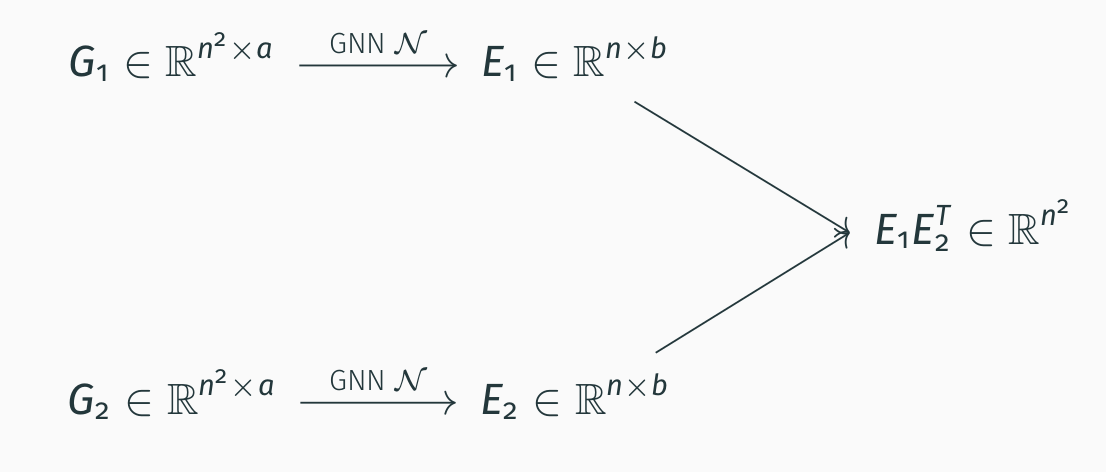In this repository, we show how to use powerful GNN (2-FGNN) to solve a graph alignment problem. This code was used to derive the practical results in the following paper:
Waiss Azizian, Marc Lelarge. Expressive Power of Invariant and Equivariant Graph Neural Networks, ICLR 2021.
The graph isomorphism problem is the computational problem of determining whether two finite graphs are isomorphic. Here we consider a noisy version of this problem: the two graphs below are noisy versions of a parent graph. There is no strict isomorphism between them. Can we still match the vertices of graph 1 with the corresponding vertices of graph 2?
| graph 1 | graph 2 |
|---|---|
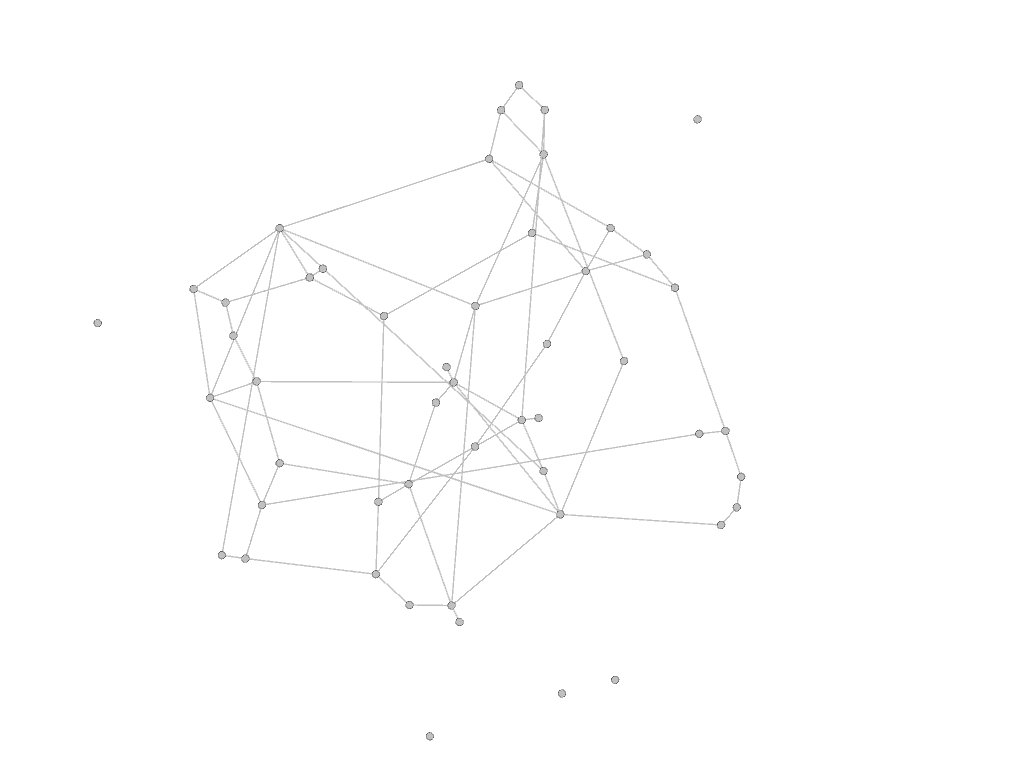 |
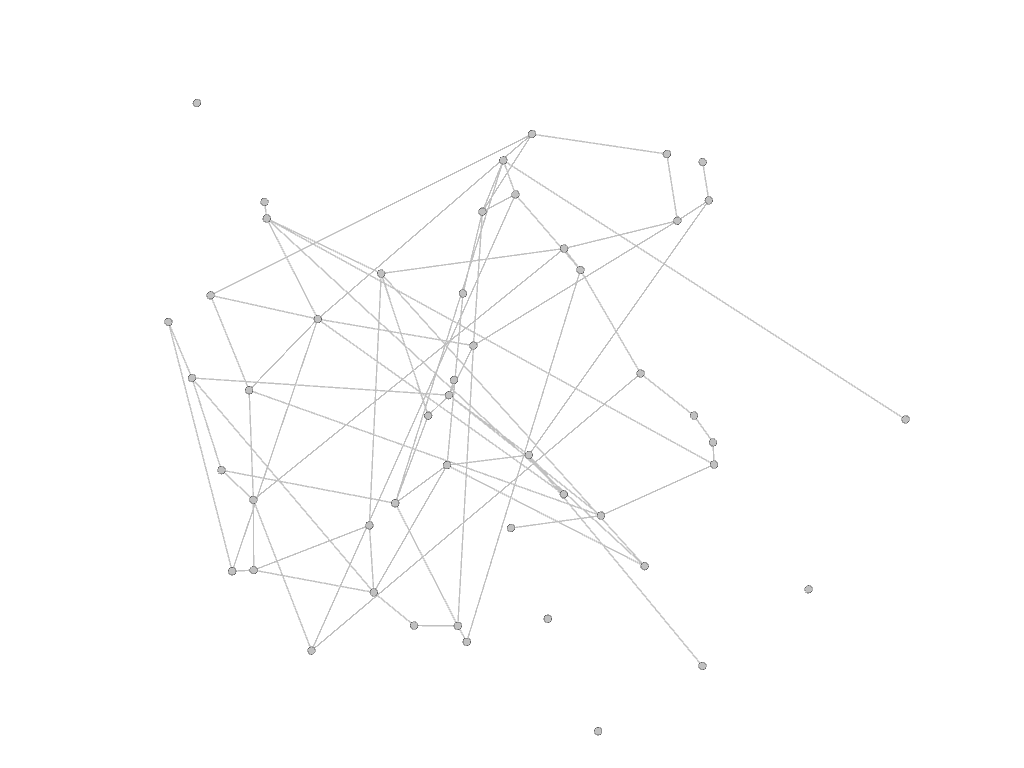 |
With our GNN, we obtain the following results: green vertices are well paired vertices and red vertices are errors. Both graphs are now represented using the layout from the right above but the color of the vertices are the same on both sides. At inference, our GNN builds node embedding for the vertices of graphs 1 and 2. Finally a node of graph 1 is matched to its most similar node of graph 2 in this embedding space.
| graph 1 | graph 2 |
|---|---|
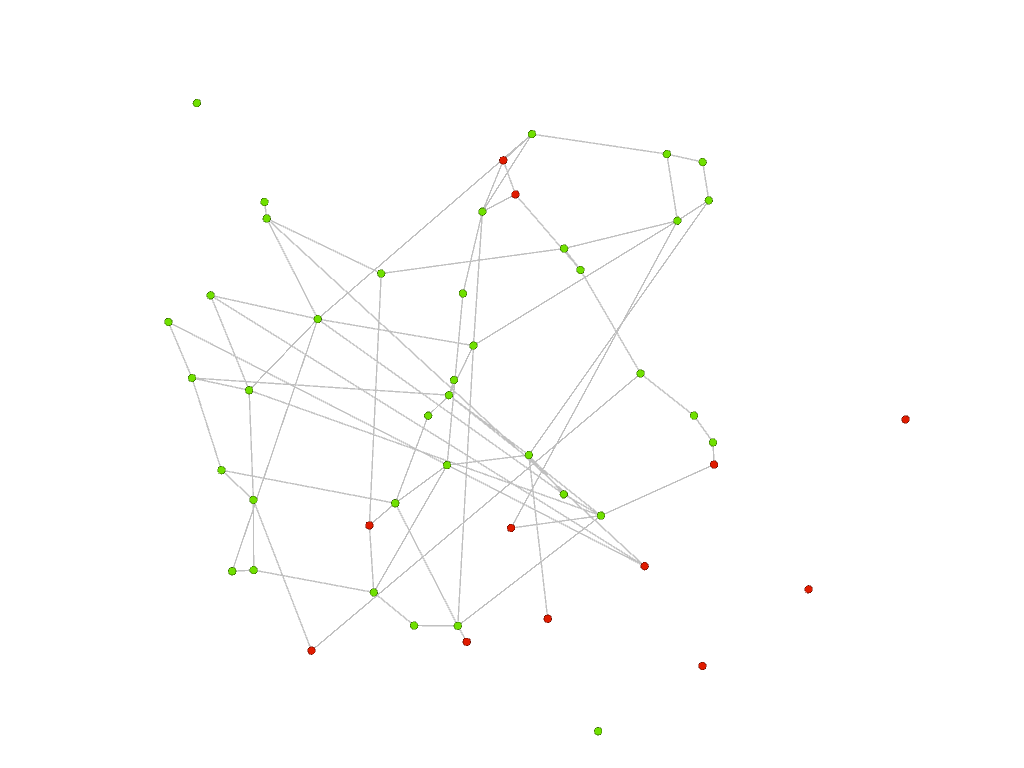 |
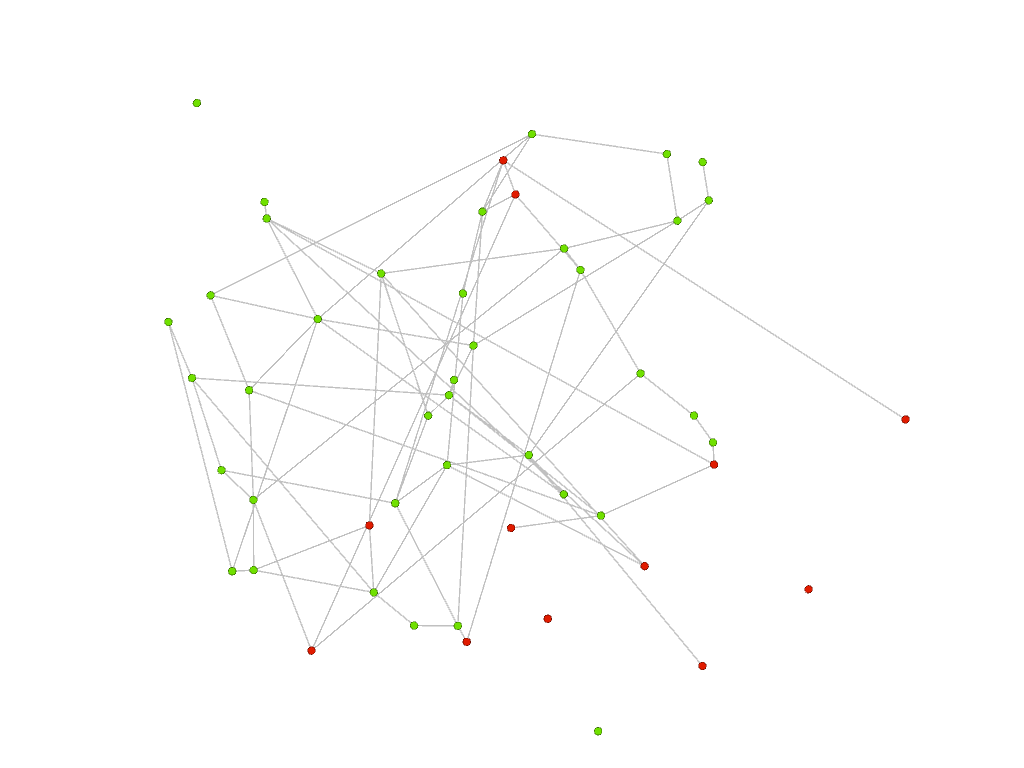 |
Below, on the left, we plot the errors made by our GNN: errors made on red vertices are represented by links corresponding to a wrong matching or cycle; on the right, we superpose the two graphs: green edges are in both graphs (they correspond to the parent graph), orange edges are in graph 1 only and blue edges are in graph 2 only. We clearly see the impact of the noisy edges (orange and blue) as each red vertex (corresponding to an error) is connected to such edges (except the isolated red vertex).
| Wrong matchings/cycles | Superposing the 2 graphs |
|---|---|
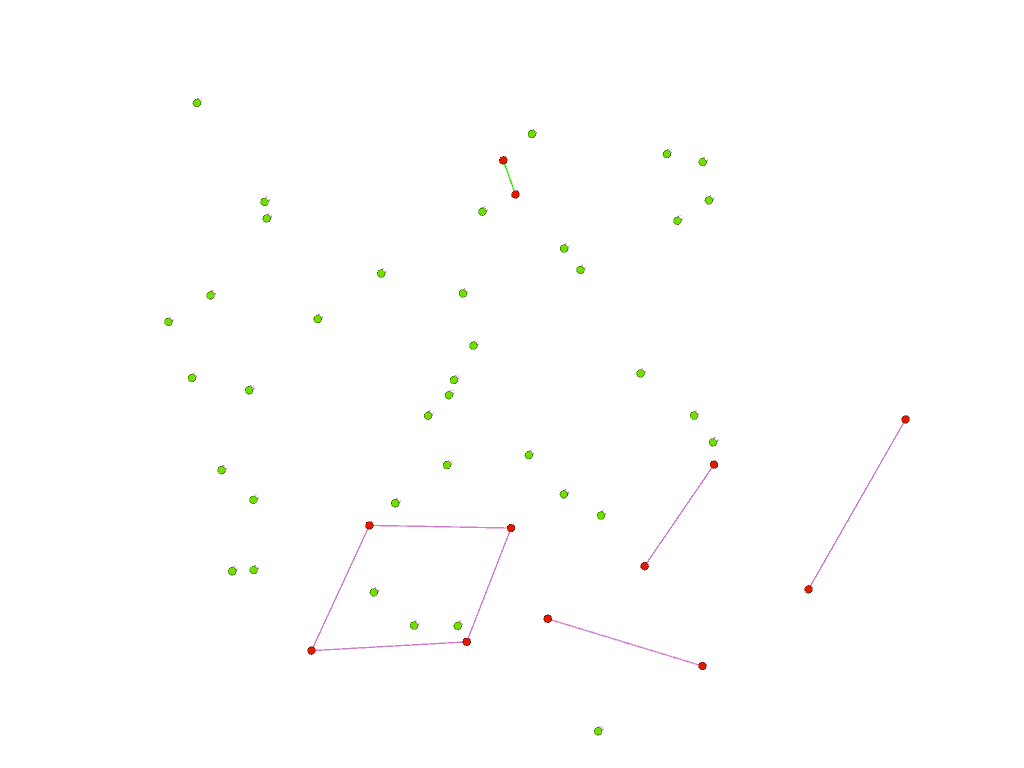 |
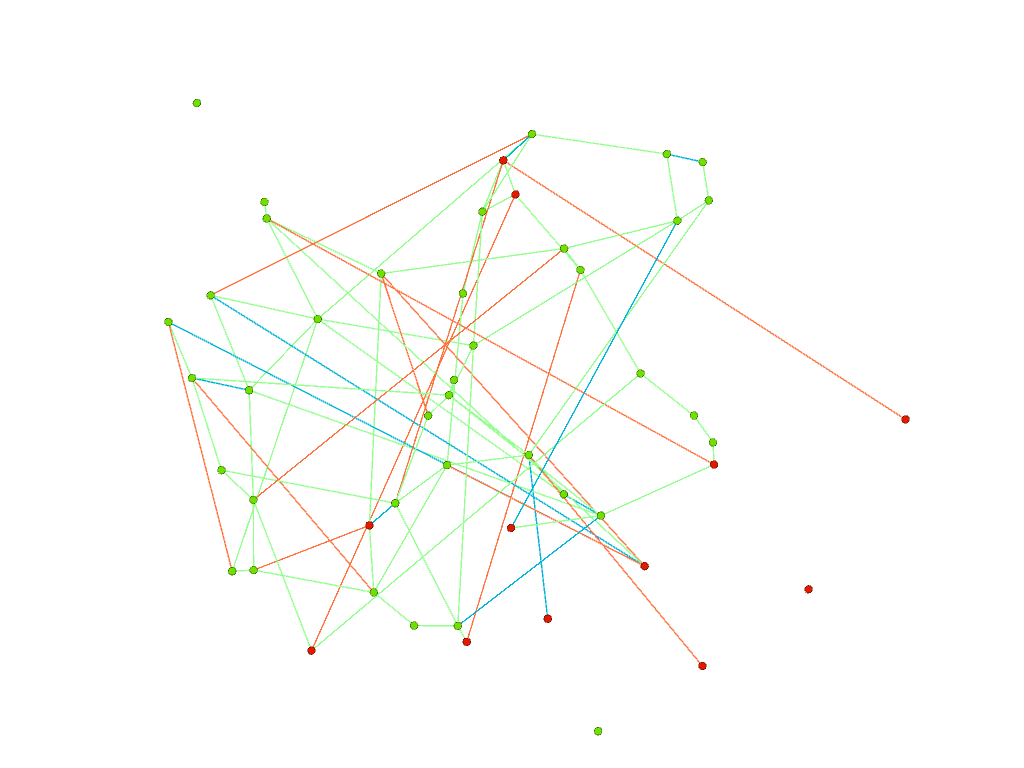 |
To measure the performance of our GNN, instead of looking at vertices, we can look at edges. On the left below, we see that our GNN recovers most of the green edges present in graphs 1 and 2 (edges from the parent graph). On the right, mismatched edges correspond mostly to noisy (orange and blue) edges (present in only one of the graphs 1 or 2).
| Matched edges | Mismatched edges |
|---|---|
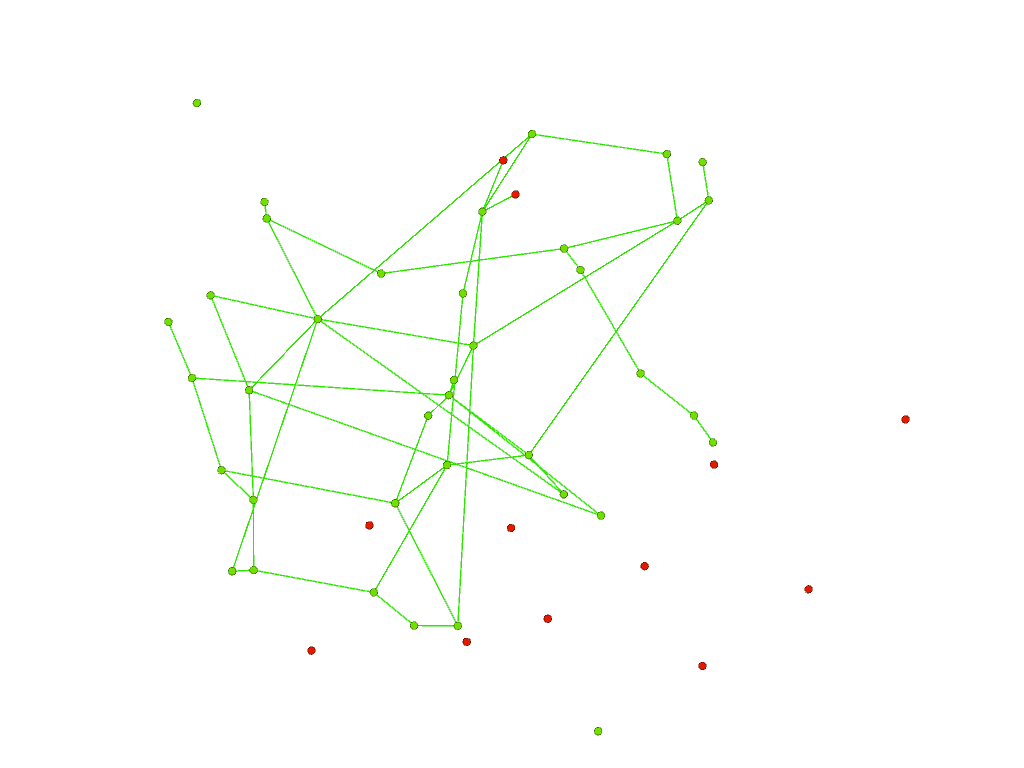 |
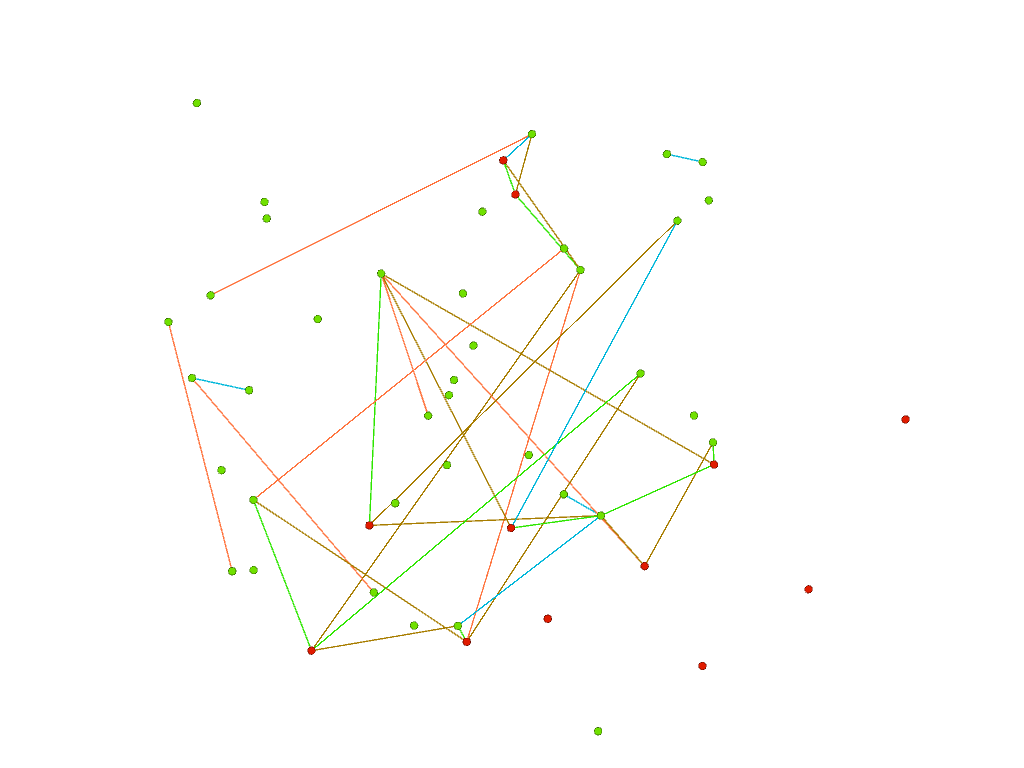 |
For the training of our GNN, we generate synthetic datasets as follows: first sample the parent graph and then add edges to construct graphs 1 and 2. We obtain a dataset made of pairs of graphs for which we know the true matching of vertices. We then use a siamese encoder as shown below where the same GNN (i.e. shared weights) is used for both graphs. The node embeddings constructed for each graph are then used to predict the corresponding permutation index by taking the outer product and a softmax along each row. The GNN is trained with a standard cross-entropy loss.
At inference, we can add a LAP solver to get a permutation from the matrix .
Various architectures can be used for the GNN and we find that FGNN (first introduced by Maron et al. in Provably Powerful Graph Networks NeurIPS 2019) are best performing for our task. In our paper Expressive Power of Invariant and Equivariant Graph Neural Networks, we substantiate these empirical findings by proving that FGNN has a better power of approximation among all equivariant architectures working with tensors of order 2 presented so far (this includes message passing GNN or linear GNN).
Each line corresponds to a model trained at a given noise level and shows its accuracy across all noise levels. We see that pretrained models generalize very well at noise levels unseen during the training.
We provide a simple notebook to reproduce this result for the pretrained model released with this repository (to run the notebook create a ipykernel with name gnn and with the required dependencies as described below).
We refer to our paper for comparisons with other algorithms (message passing GNN, spectral or SDP algorithms).
To cite our paper:
@inproceedings{azizian2020characterizing,
title={Expressive power of invariant and equivariant graph neural networks},
author={Azizian, Wa{\"\i}ss and Lelarge, Marc},
booktitle={International Conference on Learning Representations},
year={2021},
url={https://openreview.net/forum?id=lxHgXYN4bwl}
}
.
├── cpp_code # C++ code for exact solving to be compiled
├── loaders
| └── dataset selector
| └── data_generator.py # generating random graphs
| └── test_data_generator.py
| └── siamese_loader.py # loading pairs
├── models
| └── architecture selector
| └── layers.py # equivariant block
| └── base_model.py # powerful GNN Graph -> Graph
| └── siamese_net.py # GNN to match graphs
├── toolbox
| └── optimizer and losses selectors
| └── data_handler.py # class handling the io of data and task-planning
| └── helper.py # base class for helping the selection of experiments when training a model
| └── logger.py # keeping track of most results during training
| └── losses.py # computing losses
| └── maskedtensor.py # Tensor-like class to handle batches of graphs of different sizes
| └── metrics.py # computing scores
| └── mcp_solver.py # class handling the multi-threaded exact solving of MCP problems
| └── minb_solver.py # class handling the multi-threaded exact solving of Min Bisection problems
| └── optimizer.py # optimizers
| └── searches.py # contains beam searches and exact solving functions
| └── utility.py
| └── vision.py # functions for visualization
├── article_commander.py # main file for computing the data needed for the figures
├── commander.py # main file from the project serving for calling all necessary functions for training and testing
├── trainer.py # pipelines for training and validation
├── eval.py # testing models
Dependencies are listed in requirements.txt. To install, run
pip install -r requirements.txt
DGL is not included in the requirements.txt, please follow the dgl specific instructions
Run the main file commander.py with the command train
python train commander.py
To change options, use Sacred command-line interface and see default_config.yaml for the configuration structure. For instance,
python commander.py train with cpu=No data.generative_model=Regular train.epoch=10
You can also copy default_config.yaml and modify the configuration parameters there.
See Sacred documentation for an exhaustive reference.
To save logs to Neptune, you need to provide your own API key via the dedicated environment variable.
There are two ways of evaluating the models. If you juste ran the training with a configuration conf.yaml, you can simply do,
python commander.py eval with conf.yaml
You can omit with conf.yaml if you are using the default configuartion.
If you downloaded a model with a config file from here, you can edit the section test_data of this config if you wish and then run,
python commander.py eval with /path/to/config model_path=/path/to/model.pth.tar
will retrieve the trained model and evaluated it on a test dataset. More options are available in eval.py.
